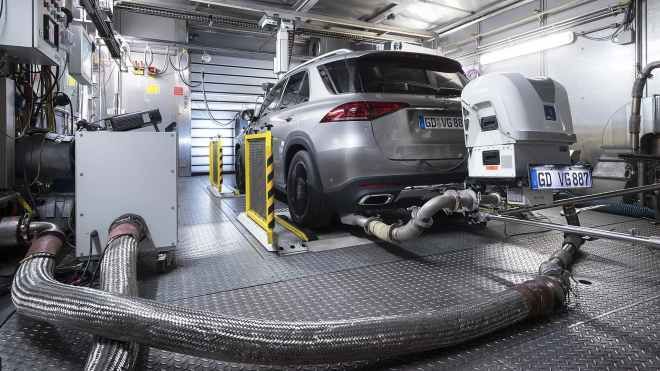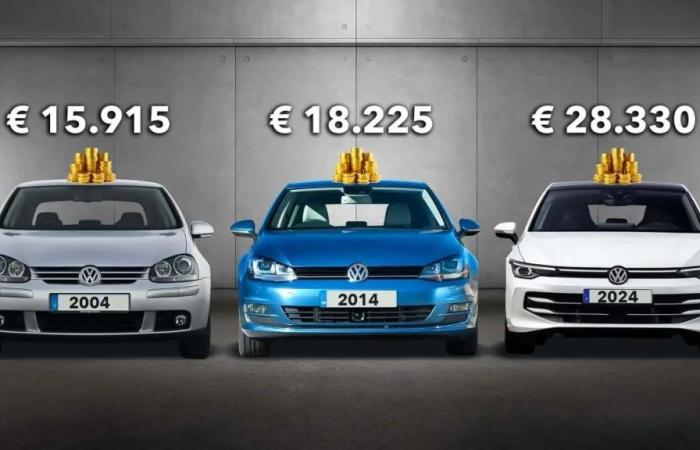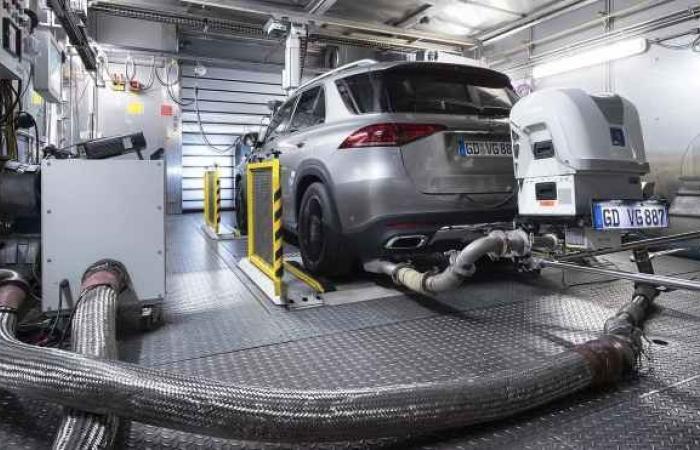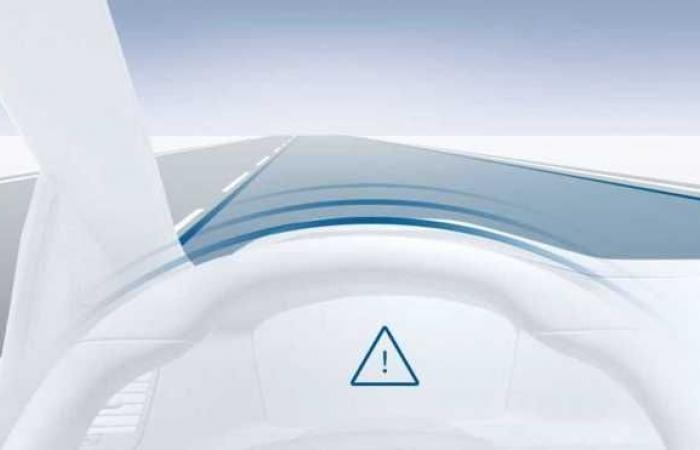Car prices have risen sharply in recent years, something we have all noticed as drivers. However, it is more difficult to understand to what extent and why the prices of the cars we drive have increased. A study last year by the company Transport&Environment showed that major European manufacturers increased the prices of their basic models by 41 percent. But let’s try to better understand the extent of this phenomenon and its reasons.
Golf costs almost twice as much as it did 20 years ago
For a more concrete example, we took the Volkswagen Golf, one of the best-selling models in Europe, and compared the current German price with that of ten or twenty years ago. In 2004, the basic version of the Golf 5 cost at least €15.220, but in 2014 the price of the Golf 7 started at €17.325, which was “only” an increase of 28.330%. The biggest price increase, however, is in the 70,8 price range of the popular Volkswagen: €2014, which corresponds to an increase of 89% compared to 2004 and 89% compared to 2004.
Gulf 2004 – 2014 – 2024
It should be noted, however, that the basic versions of the Golf 5 and Golf 7 models were three-door and air conditioning was not standard in 2004. The corresponding five-door models cost €15.915 in 2004 in 2014 and €18.225 in 1984. 2000. We used these prices for our main image. From 16 to 13,490 (in just 26,900 years!), the price in German marks of the Golf model also doubled: from 2024 116 to 1.5 75 marks. In addition to significantly more equipment in the Golf 2004, more power is also available in the base model: 200 hp for the 2004 liter turbocharged gasoline engine, compared to 2004 hp for the naturally aspirated 2004 model.
| Model and year | Dinner | % growth |
| VW Golf (2004) | 15.220 15.915 €/5 XNUMX € (XNUMX portes) | – |
| VW Golf (2014) | 17.325 18.225 €/5 XNUMX € (XNUMX portes) | + 13.8% compared to 2004 |
| VW Golf (2024) | 28.330 € | + 55.4% compared to 2014, + 78% compared to 2004 |
In short: if you want to buy a base Golf model today, you have to pay almost twice as much as you did ten or twenty years ago. This is, of course, the result of pervasive inflation, which currently stands at 1.9 percent in Germany and reached its highest level in 2022, when it stood at more than eight percent. What are the other reasons? Let’s find them together.
The microchip crisis
One of the main reasons for the price rise is the lack of microchips. The pandemic halted or slowed semiconductor production between 2020 and 2023, slowing vehicle production. This reduced supply, increased demand and therefore also car prices. Integrated circuit manufacturing plants, mainly concentrated in Eastern countries such as China, Taiwan and South Korea, have not yet been joined by such large chip factories in Europe (although ‘they are planned), so that the automobile market remains dependent on imports, with which are associated with supply problems in the event of international crises.
Rising raw material costs
According to JP Morgan, almost half of the increase in new vehicle prices is due to rising costs of inputs such as raw materials. Even though the costs of steel, aluminum, copper and plastic peaked in 2022, the high costs (depending on location) of transportation, logistics, labor and electricity that suppliers pass on to automakers remains a problem.
Added to this are high inflation rates in various regions of the world, which affect the production costs of cars and therefore consumer prices. Nominal wages in Germany were currently 2024% higher in the second quarter 5,4 than in the same quarter of the previous year. Consumer prices increased by 2.3% during the same period.
According to data from the Federal Statistical Office (Destatis), real wages were thus 2024% higher in the second quarter 3,1 than those in the same quarter of the previous year. With this fifth consecutive increase, the positive trend in real wage growth continued. During the quarters from the end of 2021 to the beginning of 2023, employees on average still saw a drop in their real salary.
Fewer cars sold, more profit per car
The decline in car sales, which began in 2020 and is still far from pre-pandemic levels, has another effect on the price list. Fewer cars sold means less profit for automakers, who therefore seek to increase their margins per car delivered. This means they need to make more profit on each car sold to keep profits high and distribute them to members by increasing the list price to achieve equal or greater profit than before the pandemic.
Environmental regulations
Added to this are increasingly strict environmental regulations in Europe, which require car manufacturers to invest in low-emission technologies such as sophisticated exhaust reduction systems and more efficient engines. Tighter restrictions on fuel consumption and CO2 emissions, which will apply from 2025, also play an important role in this.

In our opinion, it is not excluded that clean-burning cars will become even more expensive in order to shift customer demand towards plug-in hybrid cars and electric cars, which would help reduce the heavy fines imposed on car manufacturers. The de facto ban on cars with internal combustion engines, planned for 2035, has also encouraged large companies to invest billions of euros in the development of a new electric car industry, including expensive gigafactories for battery production.
Driving aids and safety systems
In recent years, the European Commission has made the use of a number of safety and driver assistance systems (ADAS) mandatory for newly registered cars, leading to an increase in vehicle prices. These are important functions for road safety, such as automatic emergency braking, lane keeping, driver fatigue detection or the eCall system.

To this must be added the increasingly strict EuroNCAP criteria for awarding the famous five stars to crash tests. All of this comes at a price, as the components, technology and integration of these new ADAS systems increasingly affect the final price of the vehicle.











